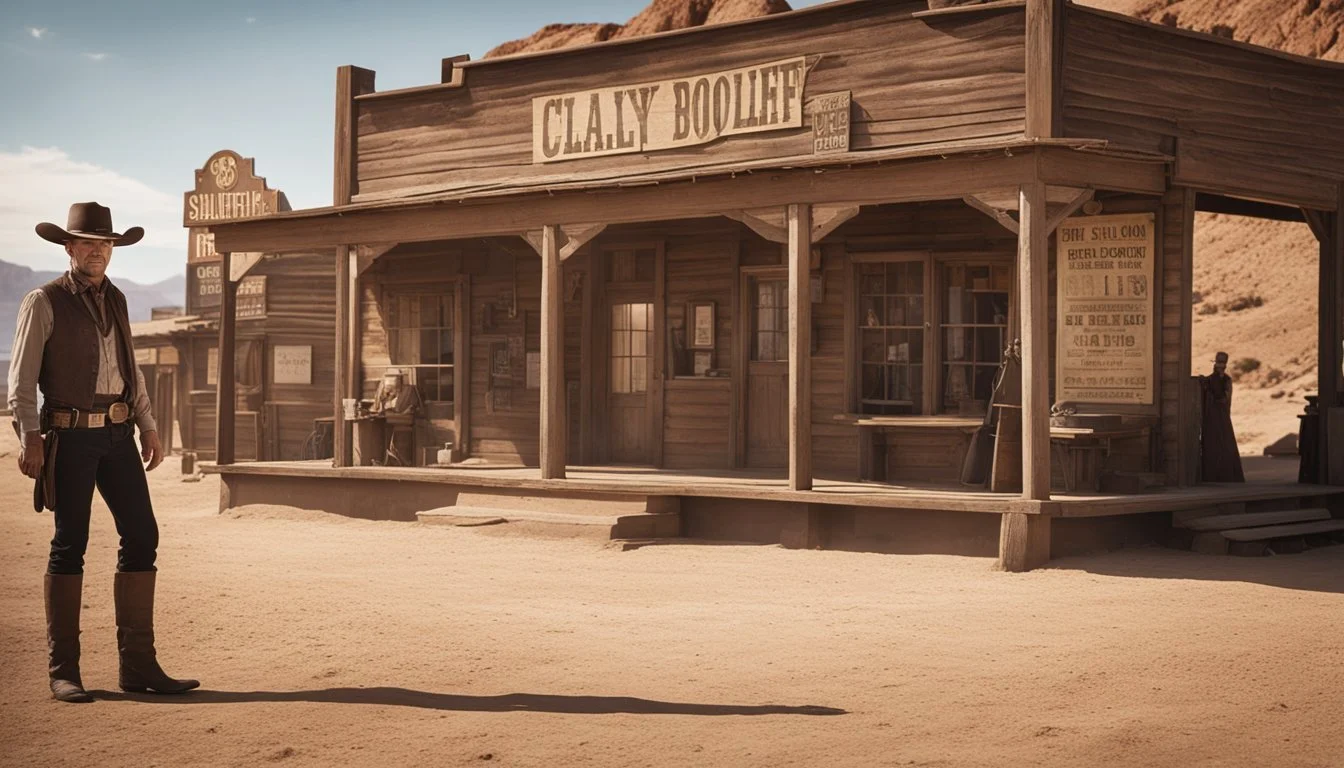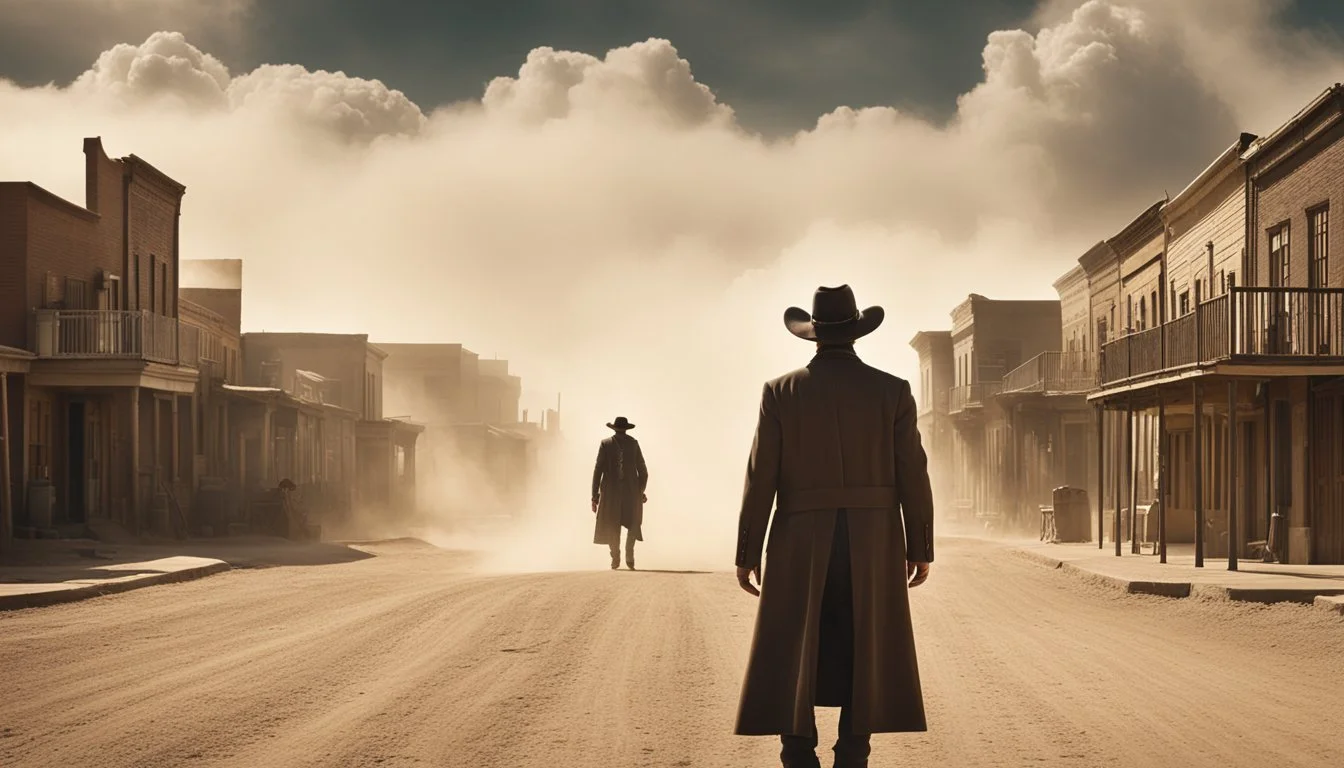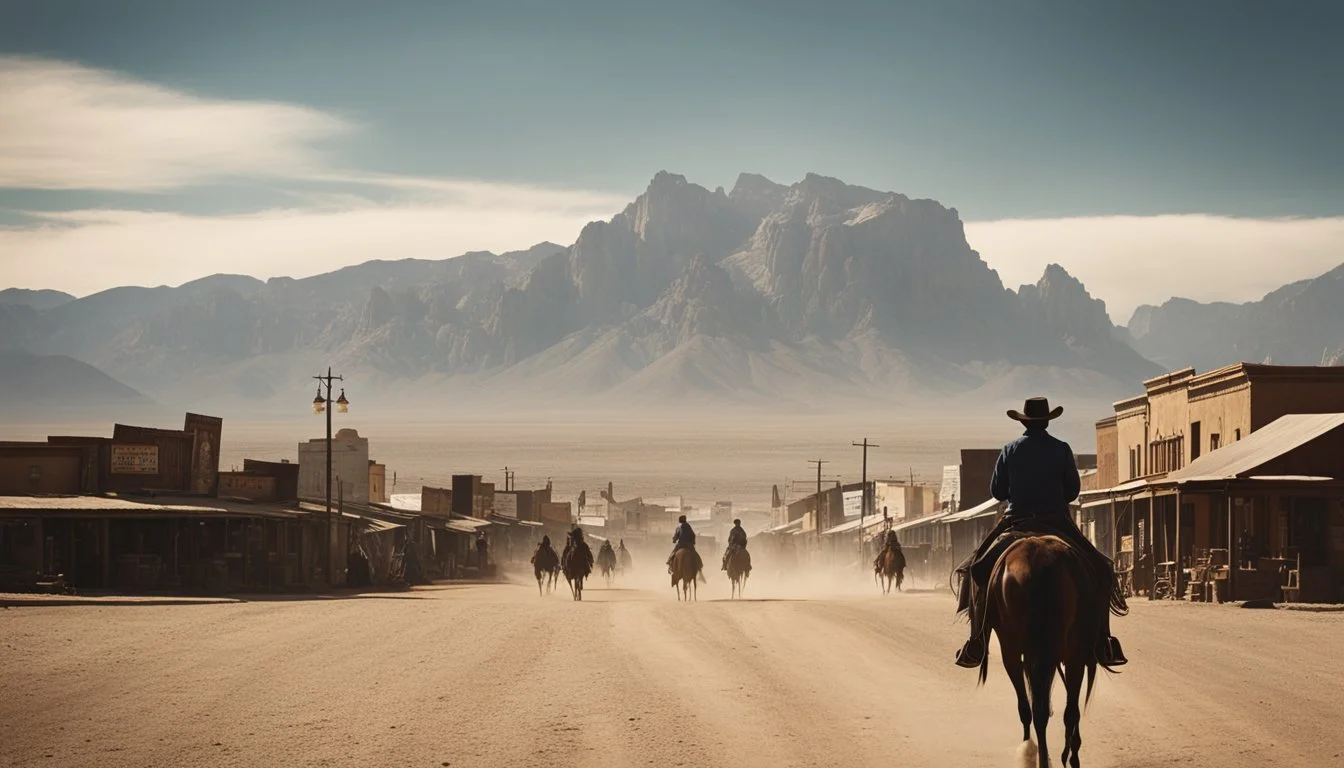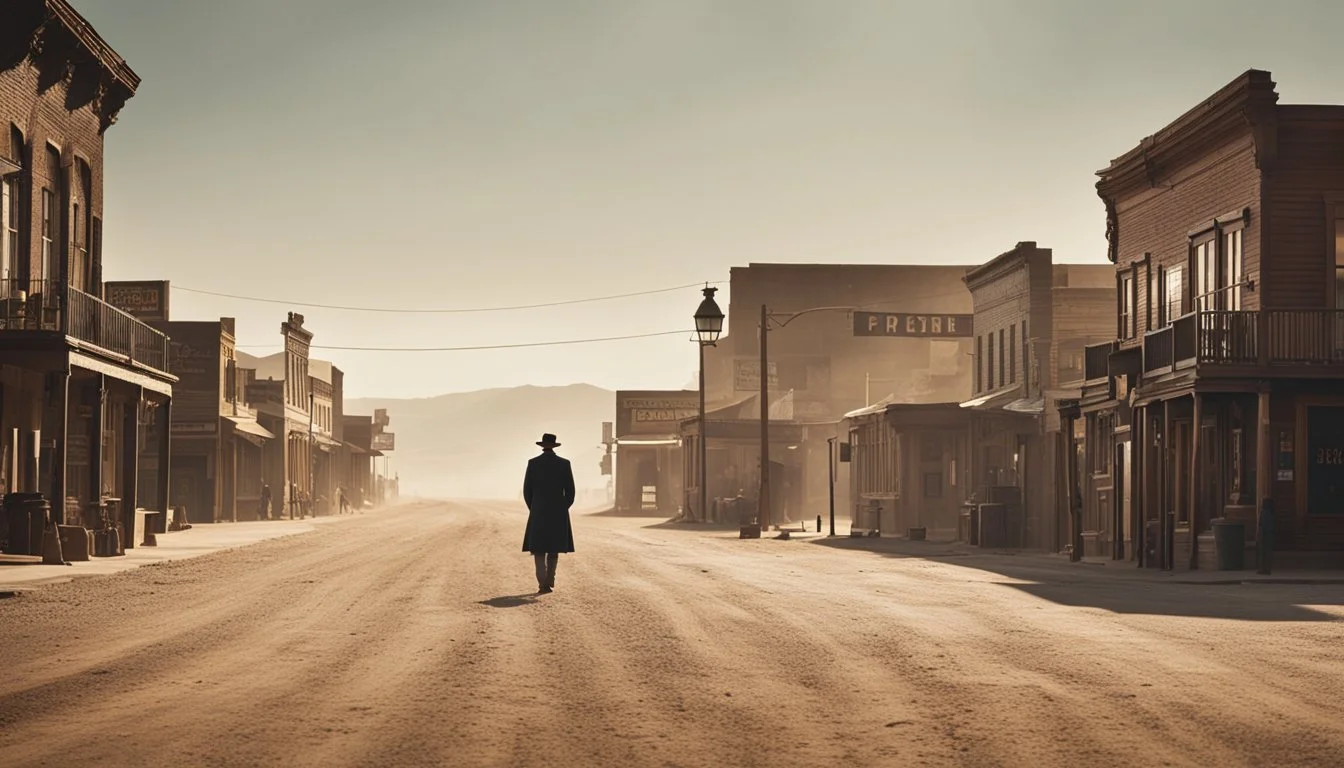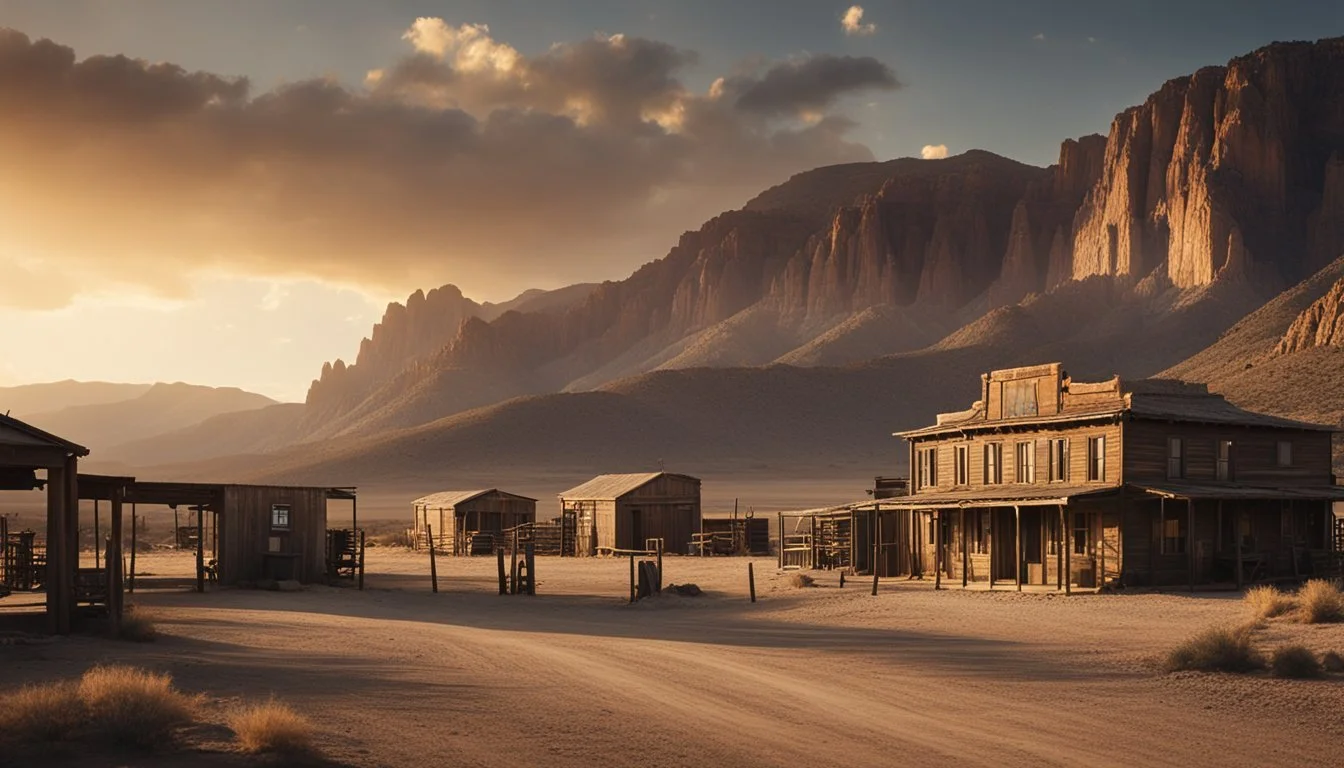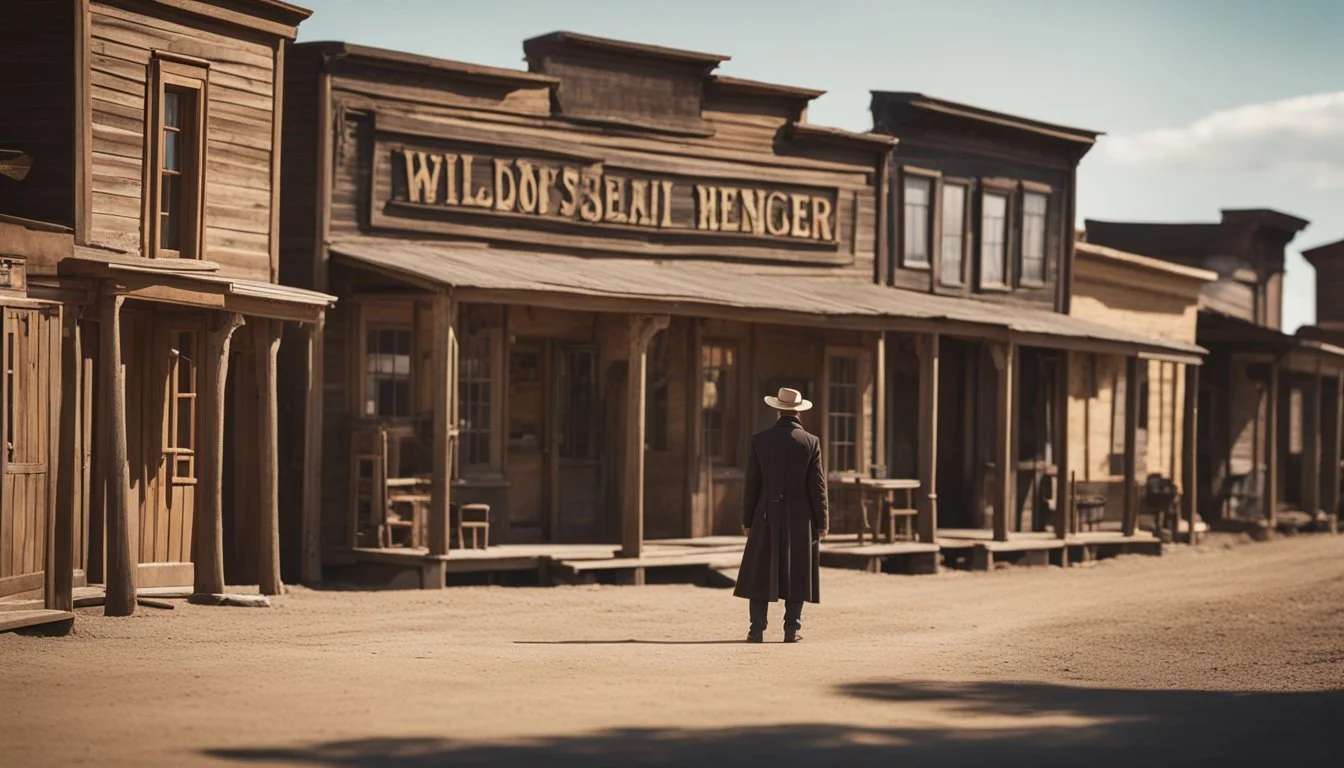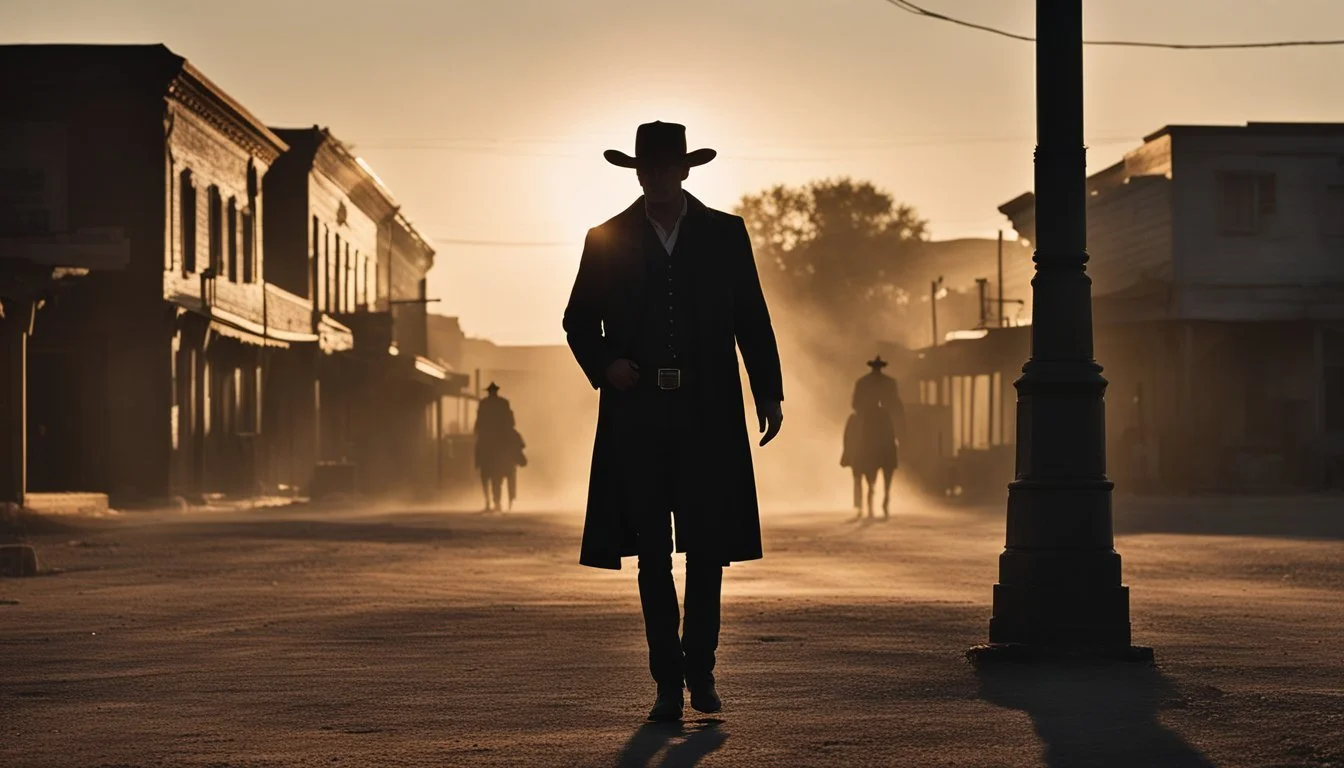5 Clay Allison Documentaries Exploring the Psychopathic Gunfighter
Unveiling the Dark Legacy of a Wild West Icon
Clay Allison, a notorious figure of the American Old West, lived a life marked by violence and unpredictability. Born in 1841 in Tennessee, Allison gained a reputation as a cattle rancher, gunfighter, and outlaw known for his volatile temper and bizarre behavior.
Several documentaries have explored the complex and violent life of Clay Allison, offering viewers insight into his psychopathic tendencies and the tumultuous times in which he lived. These films delve into Allison's experiences as a Confederate soldier, his involvement in numerous gunfights, and his ultimate demise in 1887. By examining primary sources and expert analyses, these documentaries aim to shed light on the man behind the legend and the factors that shaped his violent legacy.
1) "The Gunslinger and His Madness: The Clay Allison Story" by J.T. Hunter (2018)
This documentary explores the life of Clay Allison, a notorious gunfighter from the American Old West. J.T. Hunter's film delves into Allison's complex personality and violent tendencies.
The documentary examines Allison's childhood and the head injury that may have contributed to his erratic behavior. It presents interviews with historians who discuss Allison's reputation as a dangerous and unpredictable figure.
Hunter's film highlights several infamous incidents from Allison's life, including his involvement in various gunfights and confrontations. The documentary also touches on Allison's brief stint as a Texas Ranger.
The film discusses Allison's final years and the circumstances surrounding his death. It features reenactments of key events and archival photographs to bring the gunfighter's story to life.
More information on Clay Allison
2) "Psychopath in the Wild West: Clay Allison's Notorious Life" by Larry D. Ball (2009)
Larry D. Ball's documentary delves into the complex psyche of Clay Allison, presenting a nuanced portrait of the infamous gunfighter. The film explores Allison's tumultuous life, from his early days in Tennessee to his violent exploits in the American West.
Ball's work examines Allison's reputation as a dangerous and unpredictable figure. It highlights key incidents that shaped public perception of the gunslinger, including his involvement in numerous deadly confrontations and vigilante activities.
The documentary also addresses Allison's struggles with mental health issues. It discusses theories about his possible psychopathic tendencies and how these may have influenced his behavior in the lawless frontier environment.
Through interviews with historians and psychological experts, Ball's film offers insights into Allison's motivations and the societal factors that contributed to his notoriety. The documentary provides a balanced view of Allison's life, acknowledging both his violent acts and the complexities of his character.
More information on Clay Allison
3) "The Deadly Charm: Clay Allison's Path of Chaos" by Laren K. Baxter (2018)
Laren K. Baxter's documentary explores the complex personality of Clay Allison. The film delves into Allison's reputation as a charming yet dangerous figure in the Old West.
Baxter interviews historians and psychologists to analyze Allison's behavior. They discuss his violent tendencies and the contrast with his reported charisma and loyalty to friends.
The documentary examines key events in Allison's life, including his involvement in various shootouts. It also covers his interactions with law enforcement and other notorious figures of the era.
Baxter's film uses reenactments to illustrate pivotal moments in Allison's career as a gunfighter. These scenes help viewers visualize the chaos that often surrounded him.
The documentary considers Allison's legacy and impact on Wild West mythology. It questions how his actions shaped perceptions of frontier justice and violence.
More information on Clay Allison
4) "Soul of a Killer: The Infamous Clay Allison" by Robert A. Waters (2018)
Robert A. Waters' documentary explores the complex psyche of Clay Allison, delving into his violent tendencies and reputation as a gunfighter. The film examines Allison's early life and the factors that may have contributed to his aggressive behavior.
Waters interviews historians and psychologists to analyze Allison's actions and motivations. The documentary presents evidence of Allison's erratic conduct, including his habit of riding through town naked on his horse.
The film also covers Allison's involvement in various gunfights and confrontations. It recounts his infamous "tooth-pulling" incident, where he allegedly extracted a dentist's tooth as revenge.
Waters' documentary provides a balanced view of Allison, discussing both his violent acts and his reputation for defending the weak. It explores the concept of frontier justice and how it shaped Allison's behavior.
The film uses reenactments and archival photographs to bring Allison's story to life. It offers viewers a comprehensive look at one of the Old West's most enigmatic figures.
More information on Clay Allison
5) "Unmasking a Killer: Clay Allison's Dual Nature" by Leo A. Morris (2018)
Leo A. Morris's documentary explores the complex personality of Clay Allison. The film delves into Allison's reputation as a fearsome gunfighter and his lesser-known gentle side.
Morris interviews historians and psychologists to analyze Allison's behavior. They discuss his violent outbursts and the contrast with his reported kindness to friends and family.
The documentary examines Allison's upbringing and potential factors that shaped his character. It presents evidence of his involvement in multiple killings alongside accounts of his generosity.
Experts in the film debate whether Allison fit the clinical definition of a psychopath. They consider his ability to form relationships and show empathy in certain situations.
"Unmasking a Killer" uses reenactments to illustrate key events in Allison's life. These scenes help viewers visualize the gunfighter's actions and demeanor in different contexts.
Morris's work provides a nuanced look at a controversial figure of the Old West. It challenges viewers to consider the complexities of human nature and the factors that drive violent behavior.
More information on Clay Allison
Historical Context of the American Frontier
The American frontier in the late 1800s was a complex landscape shaped by rapid westward expansion, economic opportunities, and violent conflicts. This era saw the emergence of legendary gunfighters and the evolution of a uniquely American mythos.
Post-Civil War Society
After the Civil War, thousands of veterans and civilians migrated westward seeking new opportunities. The government encouraged settlement through policies like the Homestead Act of 1862. This influx led to clashes with Native American tribes, resulting in numerous conflicts and forced relocations.
Frontier towns sprang up rapidly, often lacking established law enforcement. Local justice systems were sometimes unreliable or corrupt. This environment fostered a culture of self-reliance and vigilantism.
The transcontinental railroad, completed in 1869, accelerated westward expansion. It facilitated trade, communication, and further settlement of previously remote areas.
Development of Gunfighter Legends
The chaotic frontier environment gave rise to infamous gunslingers. Men like Wyatt Earp, Billy the Kid, and Clay Allison gained notoriety through their exploits. These individuals often straddled the line between lawman and outlaw.
Dime novels and sensationalized newspaper accounts fueled public fascination with gunfighters. Writers embellished real events, creating larger-than-life personas. This romanticized portrayal of the "Wild West" persists in popular culture today.
Gunfighting skills became highly valued in this volatile setting. Quick-draw contests and public duels were not uncommon. The reputation of being fast on the draw could deter potential threats.
Clay Allison: The Man and the Legend
Clay Allison was a notorious gunfighter and rancher in the American Old West. His reputation for violence and skill with firearms made him a legendary figure of the era.
Early Life and Family Background
Robert Andrew Clay Allison was born on September 2, 1841. He grew up on a farm in Wayne County, Tennessee, as one of nine children.
During the Civil War, Allison fought for the Confederacy. He suffered a head injury that may have contributed to his later erratic behavior.
After the war, Allison moved west and became a ranch owner in New Mexico Territory. He gained notoriety for his quick temper and deadly accuracy with guns.
Notable Encounters and Conflicts
Allison's reputation grew through various confrontations and gunfights. In 1876, he famously rode his horse through Cimarron, New Mexico, naked, shouting and shooting his pistols.
He clashed with lawmen and other gunfighters. One incident involved Wyatt Earp in Dodge City, Kansas, though accounts vary on what transpired between them.
Allison also engaged in vigilante activities. He participated in lynchings and took the law into his own hands on multiple occasions.
Despite his violent tendencies, Allison was known for loyalty to friends and family. He died in 1887 in a wagon accident, ending his tumultuous life at age 45.
Psychological Profile of Clay Allison
Clay Allison displayed traits and behaviors consistent with psychopathy. His violent tendencies and lack of empathy shaped his actions throughout his life as a gunfighter in the Old West.
Traits of Psychopathy
Allison exhibited several key psychopathic traits. He showed a callous disregard for others, engaging in multiple deadly gunfights without remorse. His impulsivity led to rash, violent acts.
Allison's charm and charisma allowed him to manipulate situations to his advantage. He lacked empathy, showing no concern for his victims or their families.
His grandiose sense of self-worth was evident in his self-proclaimed title of "shootist." Allison craved excitement and was prone to boredom, which may have fueled his violent outbursts.
Behavioral Patterns
Allison's behavior followed clear psychopathic patterns. He was known for sudden, explosive violence, often initiating deadly confrontations over minor slights.
His participation in vigilante groups and lynchings demonstrated a disregard for law and social norms. Allison showed no fear in dangerous situations, engaging in numerous one-on-one knife and gun duels.
He moved frequently between states, possibly to escape consequences. His involvement in the Colfax County War highlighted his tendency to escalate conflicts.
Allison's early trauma of losing his father at age five may have contributed to his unstable and violent adult behavior.

